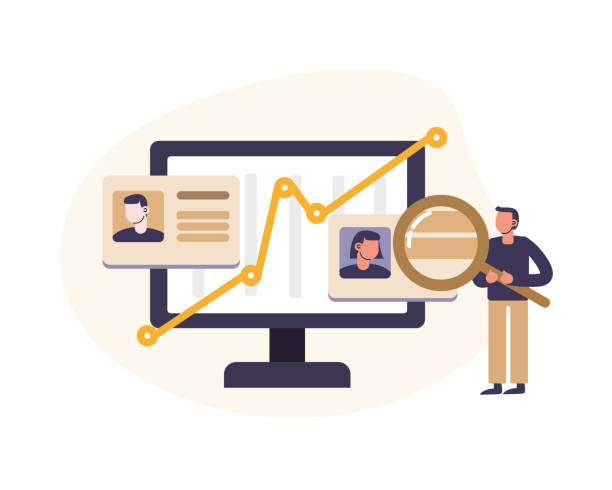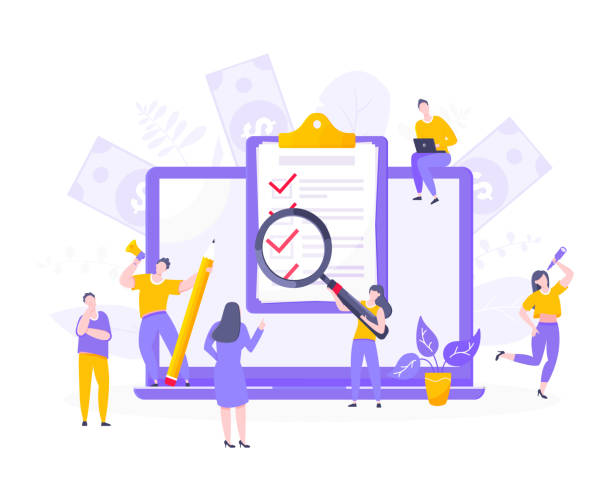Why is Multilingual Website Design a Necessity?

In today’s world, expanding digital presence goes beyond geographical borders.
Multilingual website design is no longer a luxury choice, but a #strategic_necessity for businesses seeking #global_markets.
With increasing internet access worldwide, your audience is not limited to Persian-speaking users.
A site that can offer its content in different languages automatically expands its reach and connection with a wider range of customers and users.
This approach not only improves #user_experience but also directly impacts #brand_credibility and #SEO_ranking in search engines.
Have you ever wondered what percentage of your potential audience cannot access your information and services due to a language barrier?
This is a thought-provoking content that shows why we should consider multilingual website design.
By doing so, you are not only expanding your business but also investing in global accessibility and inclusivity for all users.
Don’t have a corporate website yet and missing out on online opportunities? With professional corporate website design by Rasaweb,
✅ Double your business credibility
✅ Attract new customers
⚡ Free consultation for your corporate website!
Technical Approaches in Multilingual Website Implementation
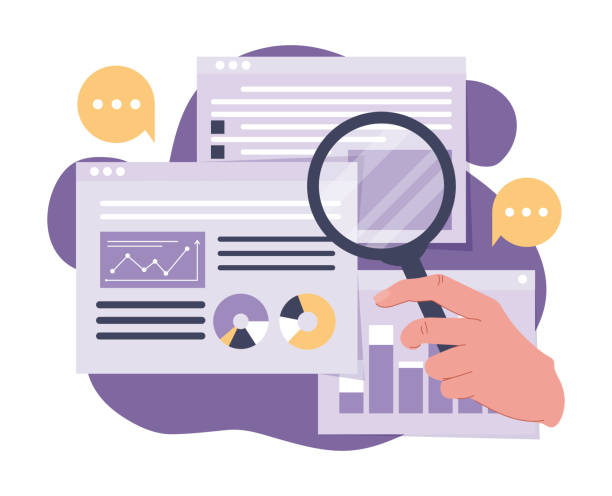
Implementing a #multilingual_website requires significant technical precision.
Among the most important approaches are using subdomains (e.g., en.yoursite.com), subdirectories (e.g., yoursite.com/en/), or country-code top-level domains (e.g., yoursite.co.uk).
Each of these methods has its own advantages and disadvantages in terms of SEO and management.
For example, subdirectories are usually more popular for SEO because they inherit the main domain’s authority, while country-code domains are very strong for geographical targeting.
This is a specialized section that requires deep knowledge of #web_architecture and #search_engine_optimization.
Choosing the right method depends on several factors, including content structure, business goals, and available technical resources.
Ensuring the compatibility of the Content Management System (CMS) with multilingual capabilities is also crucial.
Many modern CMSs like WordPress with appropriate plugins or Drupal natively support this feature.
Success in #multilingual_website_design heavily depends on careful planning at this stage.
Using hreflang tags is also essential for search engines to display the correct language version to users.
This is a key technical aspect for #improved_accessibility and #SEO.
SEO Optimization for Multilingual Websites

SEO optimization for multilingual websites goes far beyond simply translating content.
You need to consider specific SEO strategies for each language and region.
The correct use of the `hreflang` tag is of paramount importance.
This tag helps search engines understand which version of a page is appropriate for which language and geographical region, preventing duplicate content issues.
For example, an international SEO website might have different versions of a page for German-speaking users in Germany and for French-speaking users in France.
Keyword research must be done separately for each language, as popular keywords in one language may not have a direct equivalent in another language or may have a different search volume.
This is an educational content that explains how to perform #geo_targeting and #keyword_adaptation.
It must be ensured that your servers meet the needs of international users and that page loading speed is optimized in different regions of the world.
Also, the structure of multilingual URLs affects SEO.
Optimizing meta tags, meta descriptions, and titles for each language in a native and culturally appropriate manner are other vital steps for success in #multilingual_website_design.
Targeting different audiences around the world requires an analytical and data-driven approach.
| Method | Example | Advantages | Disadvantages |
|---|---|---|---|
| Subdirectory | example.com/en/ | Inherits main domain authority, easier management | Requires careful URL planning, may be less strong for geographical targeting |
| Subdomain | en.example.com | Easy to separate content, good geographical targeting | Requires separate SEO authority, may have more technical complexity |
| Country Code Domain | example.co.uk | Best for geographical targeting, high local authority | Higher cost, managing multiple domains, requires separate SEO for each domain |
Content and Translation Management in a Multilingual Project
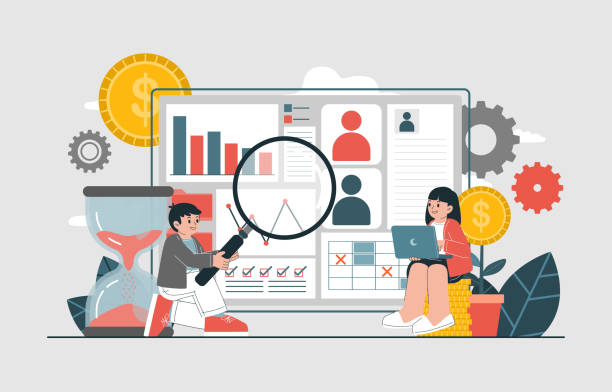
Content management and the translation process in #multilingual_website_design are among the most challenging aspects.
Mere word-for-word translation is not enough; content must be localized to align with the cultural nuances, idioms, and even humor of new audiences.
Using professional translators who are not only fluent in the target language but also fully familiar with its culture is crucial.
Translation Management Systems (TMS) can significantly help in organizing and tracking the translation process.
These systems enable collaboration between different teams, terminology management, and brand consistency.
This is a guidance section that points to the importance of #content_localization and choosing appropriate tools.
Who is responsible for updating content in different languages?
How do you ensure consistency between language versions?
These are important questions that the team must answer before starting the project.
The content strategy must be multilingual from the outset, meaning that the content produced must have the potential for translation and localization.
For #multilingual_website_design, attention must also be paid to writing differences such as text direction (right-to-left or left-to-right) and date and time formats.
Did you know that 94% of users’ first impressions of a business are related to its website design? With professional corporate website design by **Rasaweb**, turn this first impression into an opportunity for growth.
✅ Attract more customers and increase sales
✅ Build credibility and trust in the audience’s view⚡ Get a free website design consultation!
Seamless User Experience on Multilingual Websites

Providing an #excellent_user_experience for visitors to a multilingual website plays a vital role in its success.
User Interface (UI) design must allow users to easily find and select their desired language.
A clear and accessible language switcher, usually in the header or footer of the site, is of high importance.
Also, considering cultural differences in visual design, colors, and symbols can significantly impact #building_trust and #user_comfort.
This is an explanatory content that addresses the importance of design details.
Fonts must be legible in all languages, and proper display of characters must be ensured.
For example, languages like Persian and Arabic require Right-to-Left (RTL) support, which affects how elements and text are arranged on the page.
Ensuring compatibility of forms, error messages, and payment processes with different languages is also essential.
The goal of #multilingual_website_design is for every user, regardless of their language, to feel that the website was designed for them.
User testing with native participants from different languages can help identify hidden user experience problems.
Challenges and Critical Points in Multilingual Website Design

Implementing a #multilingual_site comes with its own challenges.
One of the biggest challenges is #maintaining_quality and #content_consistency across all languages.
Poor or machine translations can severely damage brand credibility.
Another challenge is managing updates; when the main content changes, it must be ensured that all language versions are also updated quickly and accurately.
This is a specialized aspect requiring a coordinated team.
Legal and regulatory issues must also be considered, as data privacy laws (like GDPR) or e-commerce regulations can vary across countries.
Your site must also be compliant in this regard.
Another critical point is #technical_support and #customer_service in different languages.
If users have questions or encounter problems, they should be able to receive support in their own language.
This directly impacts user experience and #customer_loyalty.
For #multilingual_website_design, special attention must be paid not only to technical aspects but also to human and cultural aspects.
Ignoring any of these can result in losing international audiences.
Popular Tools and Platforms for Building Multilingual Websites

Choosing the right tools and platforms for #multilingual_website_design plays an important role in facilitating the process and reducing costs.
Content Management Systems (CMS) like WordPress with powerful plugins like WPML or Polylang, provide the ability to create and manage multilingual content.
Drupal and Joomla also natively support this capability and are strong options for more complex sites.
For larger projects, enterprise solutions like Sitecore or Adobe Experience Manager (AEM) offer advanced tools for localization and managing multilingual content at scale.
This is a guidance content that helps you choose the right platform.
Professional translation services and CAT (Computer-Assisted Translation) platforms are also vital tools for ensuring translation quality and increasing speed.
These platforms include translation memories and glossaries that help maintain terminology consistency over time.
Using a CDN (Content Delivery Network) is also essential to improve site loading speed for users in different geographical regions.
Remember that the success of #multilingual_website_design depends on the coordination of these tools with each other.
| CMS Platform | Multilingual Support | Main Plugin/Feature | Suitable For |
|---|---|---|---|
| WordPress | Strong (with plugin) | WPML, Polylang | Blogs, small and medium corporate websites |
| Drupal | Native and Strong | Core language modules | Complex websites and enterprise portals |
| Joomla | Native | Internal multilingual capabilities | Medium-sized websites, portfolios |
| Magento | Strong (with configuration) | Stores and Store Views | Large online stores |
Continuous Maintenance and Updates of Multilingual Websites

#Maintenance_and_updates are the cornerstone of long-term success for any multilingual website.
This includes technical, content, and SEO updates.
Site content must be regularly reviewed and updated in all languages to provide accurate and relevant information to users.
News published in the Persian section must be quickly translated and published in other languages so that international audiences are also informed.
This is news content that highlights the importance of information updates.
Checking for broken links, missing images, or technical errors in different language versions is also very important.
Website monitoring tools can help identify these problems.
Also, the SEO strategy for each language must be continuously updated with changes in Google algorithms and search trends.
Multilingual SEO is not a static process; it is dynamic.
Ensuring website compatibility with mobile devices and appropriate loading speed in all parts of the world are other maintenance tasks.
A sustainable #multilingual_website_design requires a commitment to continuous maintenance and improvement.
Are you worried about your e-commerce site’s low conversion rate and not achieving your desired sales?
Rasaweb is your specialized solution for a successful e-commerce site.
✅ Significantly increase conversion rates and sales
✅ Professional and user-friendly design to satisfy customers
⚡ Ready for a transformation in online sales? Get a free consultation!
Performance Analysis and ROI of Multilingual Sites
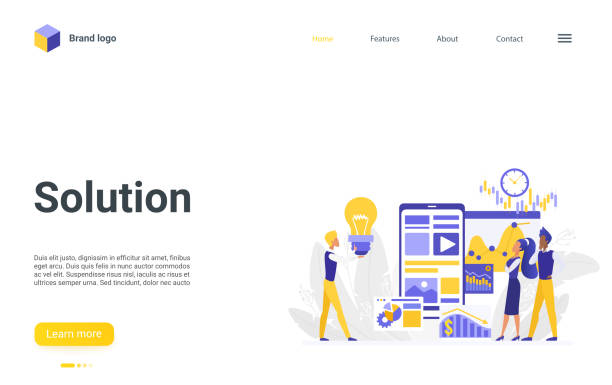
Analyzing the performance of a multilingual website is essential to understanding the return on investment and identifying opportunities for improvement.
Using analytical tools like Google Analytics, with appropriate settings for different languages and regions, allows you to track incoming traffic, bounce rate, time on site, and conversion rate for each language version separately.
This is analytical content that helps you evaluate performance.
By examining the data, you can understand which languages have the most visitors, from which countries users access the site, and which content performs better in which language.
This information can be very valuable for #content_strategy_optimization, #investing_in_new_languages, or even #redesigning_sections of the site.
Do Spanish-speaking users visit your product page more, while German-speaking users are more interested in your blog section?
Answering these questions can help improve #personalized_user_experience.
The ultimate goal of #multilingual_website_design is to achieve business objectives through access to global audiences.
Data analysis helps you ensure you are on the right track.
Future of Multilingual Website Design and Emerging Trends
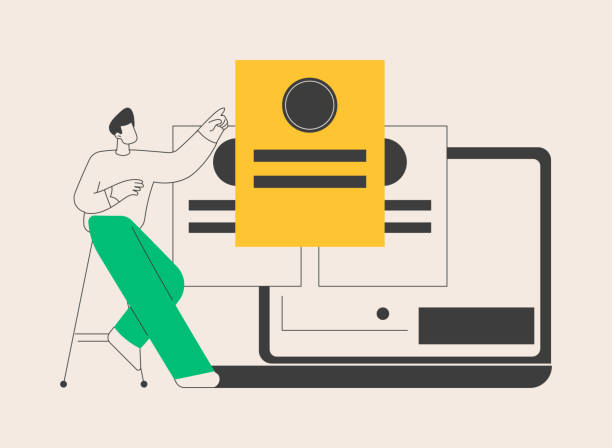
The future of #multilingual_website_design looks very exciting with technological advancements, especially in the field of artificial intelligence and machine learning.
Neural Machine Translation (NMT) is currently capable of producing very high-quality translations that can speed up the initial translation process, although it still requires human editing and localization.
This is engaging content and also #news_related to future trends.
Technologies such as artificial_intelligence can help personalize content based on users’ language and even dialect in the future.
Other trends include the increasing importance of multilingual video content, which will be easily accessible with subtitles, dubbing, or even AI capable of changing voice and language.
Also, voice assistants and voice search in different languages are expected to play a more prominent role, which will also require content optimization for these types of searches.
#multilingual_website_design in the future will move towards a fully personalized and integrated user experience across all platforms.
Companies that are aware of these trends and adapt to them will gain a significant competitive advantage in the global market.
This approach is an investment in the future of your online presence.
Frequently Asked Questions
| Question | Answer |
|---|---|
| What is multilingual website design? | It is the design of a website whose content is available to users in several different languages, so that users can choose their desired language. |
| Why is a multilingual website important? | To reach international audiences, increase website traffic, improve user experience for non-Persian speaking visitors, and expand business in global markets. |
| What are the advantages of having a multilingual website? | Increased international SEO, attracting new customers from different countries, enhancing business credibility and professionalism, and reducing bounce rate by providing understandable content. |
| What are the methods of implementing a multilingual website? | Using subdirectories (e.g., example.com/en/), subdomains (e.g., en.example.com), or separate top-level domains for each language (e.g., example.com and example.de). |
| Which URL structure is best for international SEO? | Subdirectories (Subdirectories) like example.com/en/ are often preferred for SEO due to the consolidation of main domain authority, although each method has its advantages and disadvantages. |
| How does a multilingual website affect SEO? | By providing content in different languages, the site appears in local search results for those languages, click-through rates and traffic increase, and the overall domain authority of the site improves. Correct use of hreflang tags is very important. |
| How is content translation managed? | You can use professional translators, machine translation tools (with human editing), or Content Management Systems (CMS) with built-in multilingual capabilities or relevant plugins. |
| What are the common challenges in multilingual website design? | Managing translated content, maintaining design consistency across different languages, compatibility with Right-to-Left (RTL) languages like Persian and Arabic, SEO optimization for each language, and choosing the appropriate URL structure. |
| How do I manage text direction (LTR/RTL) on a multilingual site? | For Right-to-Left languages (like Persian), you need to apply specific CSS styles to change text direction, element layout, and table direction. Often by using `direction: rtl;` and other related settings. |
| How can users change the site language? | Usually by using a language selector button, dropdown menu, or widget prominently placed in the site’s header or footer. Automatic detection of the user’s browser language and suggesting a language change is also common. |
And other services of RasaWeb Advertising Agency in the field of advertising
Smart Link Building: A creative platform to improve customer behavior analysis using real data.
Smart Website Development: An effective tool for online growth with marketing automation.
Smart Advertising Campaign: A fast and efficient solution to improve SEO ranking with a focus on precise audience targeting.
Smart Website Development: A novel service to increase customer acquisition through marketing automation.
Smart Sales Automation: A creative platform to improve click-through rates by optimizing key pages.
And over a hundred other services in the field of internet advertising, advertising consultation, and organizational solutions
Internet Advertising | Advertising Strategy | Advertorials
Resources
Principles of Multilingual Website Design
Global SEO Guide for Websites
Benefits of Having a Multilingual Website
Tools for Building Multilingual Sites
? In today’s competitive world, a strong online presence is the key to success. Rasaweb Digital Marketing Agency offers comprehensive services including fast website design, SEO, and social media management, elevating your business to its peak. For a free consultation and to learn more about our services, contact us today. 021-91097325
📍 Tehran, Mirdamad Street, next to Bank Markazi, Southern Kazeroun Alley, Ramin Alley, No. 6

